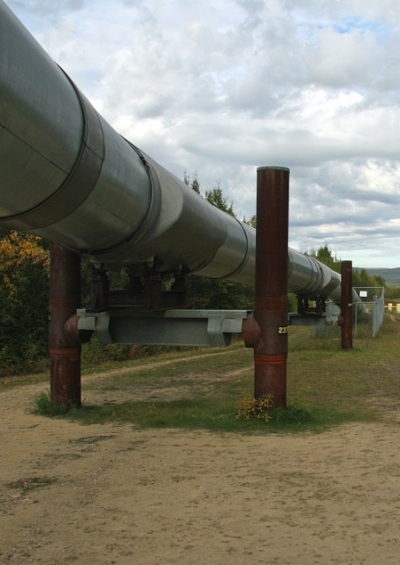Gazprom and the Dead Parrot Argument
Gazprom’s North Stream 2 gas pipeline has not been completed. Now the company wants to sue the EU for applying its own rules and regulations to the project.
July 25, 2019

As Michael Palin of Monty Python fame explained in the famous dead parrot sketch: “The parrot is not dead. It is alive, bursting with song.”
Evidently, Gazprom, the Russian gas company, has now decided to do an energy version of the same sketch. “The pipeline is completed. It’s full of gas. Can you not see the gas flowing through our wonderful pipeline?”
In reality, just as the parrot was dead, the North Stream 2 pipeline remains uncompleted. But despite the lack of a completed pipeline, Gazprom is now arguing that it should benefit from the softer regulatory regime available to completed pipelines.
Better yet, if the EU dares to subject Nord Stream 2 to the full application of EU law, Gazprom will sue the EU for billions in damages by using the EU’s Energy Charter Treaty investor protector procedures. On closer examination however, this dead parrot threat appears to be as deadly as the proverbial dead parrot.
What’s happening?
As most of the Brussels bubble has been busy engaging with the new MEPs and wondering what sort of majorities Ursula von der Leyen, the incoming Commission President — known as UVDL — may or may not get for her program, even most insiders missed an apparently momentous deadline on July 12th.
This was the day Gazprom-owned Nord Stream 2 had set for the European Commission to respond to its claim under the Energy Charter Treaty. The CEO of Nord Stream 2, Matthias Warnig, a former Stasi agent, sent a letter on April 12th to Commission President Jean-Claude Juncker.
In that letter, Warnig threatened to initiate a claim against the EU under the Energy Charter Treaty. He claimed that applying EU law to the pipeline via the Amendment to the Gas Directive that was enacted earlier this year constituted discrimination and a form of expropriation against the company.
There was a meeting on June 25th between EU and Nord Stream 2 officials to discuss this issue. However, nothing came of that meeting. Now, the EU faces the prospect of being sued by Nord Stream 2 via the ECT’s arbitration process.
As it stands, the Energy Charter Treaty is the international energy investment regime where the shareholders of the former Russian oil company Yukos were able to obtain a $50 billion award for actual expropriation by the Russian Federation.
Should Brussels tremble?
Should Brussels therefore tremble? No. The argument deployed by Gazprom is in essence a dead parrot argument. It is more of an indication of Gazprom’s desperation than any prospect of a real credible legal threat to the EU budget.
The underlying argument of Gazprom is that Nord Stream 2 is being unfairly discriminated against by the EU. It argues that it should be subject to the softer legal regime available to already completed pipelines.
That regulatory regime does not require full compliance with critical items such as the ownership unbundling requirements, tariff transparency and supply security assessment that applies to new pipelines.
Thus, Gazprom with its North Stream 2 project currently faces being subject to the full force of the energy liberalization regime. And while it is the only import pipeline to be in that position, that does not make it a matter of discrimination by any means.
The amendment to the directive applies the new regime from May 23, 2019 onward. In other words, all pipelines completed by that day are still subject to the softer regulatory regime. However, those pipelines not completed by that day are subject to the full application of the provisions of the Gas Directive 2009.
Gazprom argues that its pipeline should be deemed to be completed. However, the difficulty with that argument is that on the day the directive came into force only approximately 40% of the pipeline had been laid.
The Danish hole in the pipeline
In addition, Gazprom did not and still does not have a route permit through Danish waters. In fact, Gazprom is engaged in litigation with the Danish Energy Agency as to what route through its waters would be most appropriate.
This is where we really enter dead parrot territory. Unless Gazprom seriously wants to go back to the very Soviet world of Potemkin villages, it is difficult to see how an uncompleted pipeline can in fact be a completed pipeline.
This applies all the more so as the pipeline owner had not only not obtained one of the route permits, but is actually engaged in litigation as to which route would be most appropriate. So currently even Gazprom itself cannot actually itself provide details of the final route of the pipeline.
Claiming anti-Russian prejudice
Gazprom’s second line of attack is to argue that it has been prejudiced by the time the new legislation had come into force. After all, it argues, it had already made a final investment decision and substantial capital has been invested in the project.
The difficulty with this argument is that no one forced Gazprom to make that investment decision. A commercially responsible investor, the only sort protected under the Energy Charter Treaty case law, would have at least waited until it had obtained all its route permits before proceeding.
That at least would be the usual commercial practice with such projects, given the known financial risks involved. This Gazprom did not do. Instead it steamed ahead making the final investment decision and proceeded to pour cash into the project.
There were of course sound political reasons to do this. By beginning to construct the pipeline Gazprom created an aura of inevitability around the project. It hoped to coerce Denmark into rapidly providing a permit.
It also hoped it could force EU states to bend EU rules, so the pipeline could be (deemed) up and running without being subject to full application of EU law.
Stinging Ukraine, as always
The other factor guiding Gazprom’s decision-making was that the faster the North Stream 2 was constructed, the sooner it could stop using the Ukrainian transit route.
The explicit, but unstated goal was to undermine Ukrainian supply security and the transit security of the CEE states.
Conclusion
Despite the scary threats emanating from Nord Stream 2, and the prospect of litigation, this supposed threat is really a dog which will not bite.
The Brussels crowd can head off on holiday in the comforting knowledge that Gazprom is just running a dead parrot argument.
Editor’s Note: In the interest of full disclosure, it should be noted that Dr. Riley has previously advised the Polish energy company PGNIG and the Ukrainian energy company, Naftogaz.
Takeaways
Gazprom’s North Stream 2 gas pipeline has not been completed. Now it wants to sue the EU for applying its own rules and regulations to the project.
Gazprom argues that its pipeline should be deemed to be completed. However, only approximately 40% of the pipeline had been laid.
Gazprom seriously wants to go back to the very Soviet world of Potemkin villages. It is hard to see how an uncompleted pipeline can be a completed pipeline.
By beginning to construct the pipeline Gazprom created an aura of inevitability around the project. It hoped to coerce Denmark into rapidly providing a permit.
Guiding Gazprom’s decision-making was that the faster the North Stream 2 was constructed, the sooner it could stop using the Ukrainian transit route.
